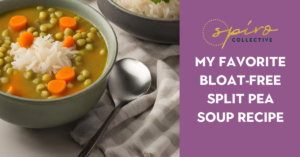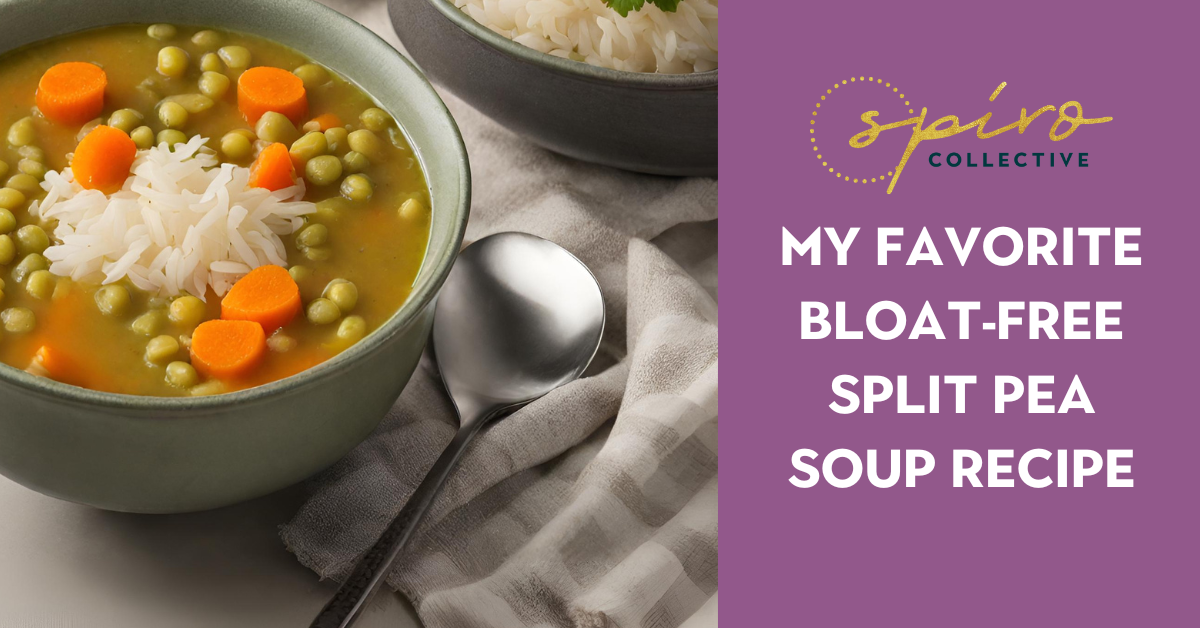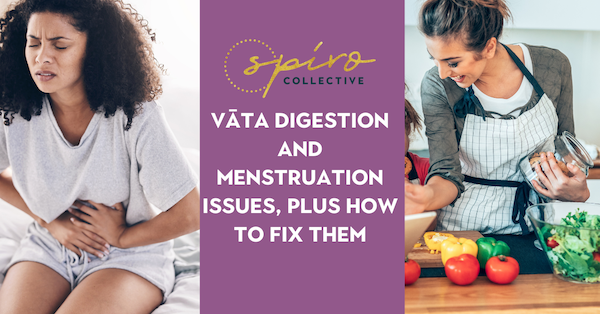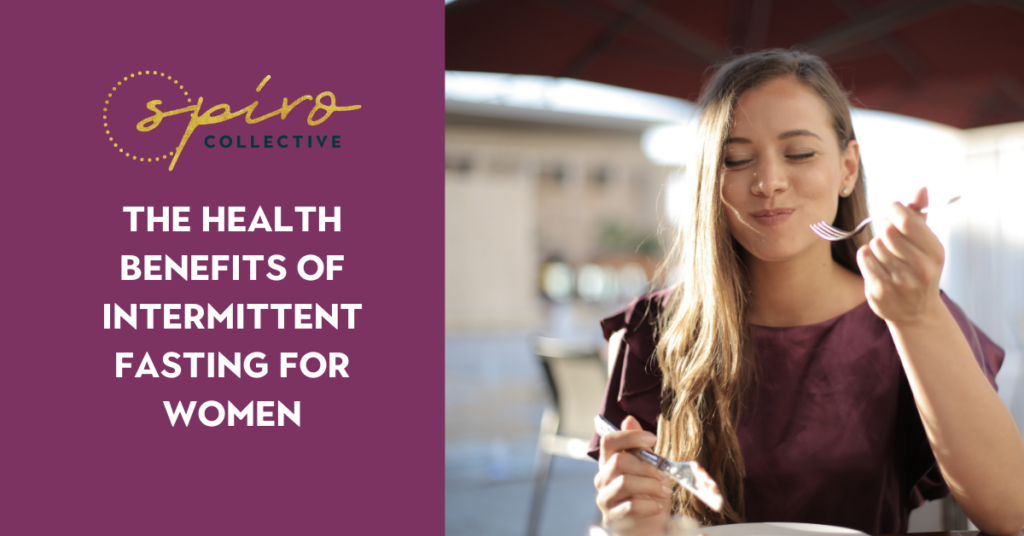Prevent PMS bloating with this warming and comforting split pea soup recipe. My bloat-free split pea soup recipe tastes delicious and is easy on digestion, even during the pre-menstrual phase or when you have your period.
Why do you bloat before your period?
In the 2 weeks before menstruation, hormones are changing frequently, causing digestive issues. Estrogen and progesterone rise during the first half of the luteal phase, and then begin to drop if an egg doesn’t implant. High progesterone can lead to more constipation, water retention, mood swings, and bloating. And as the hormones drop, we’re less able to efficiently digest food. At this time, you might experience a more “sensitive stomach”, including bloating and gas.
Legumes and split peas aren’t particularly easy to digest (more on that below). But you don’t have to avoid these foods entirely before your period. Learn how you can make a split pea soup recipe that tastes delicious and will keep you bloat-free.
Why do split peas (and other lentils and legumes) cause bloating?
From a Western nutrition perspective, legumes, lentils, and split peas can cause bloating because of the oligosaccharides present. Oligosaccharides are small sugars that aren’t actually digested by us. Rather, oligosaccharides are digested by the bacteria present in the gut! When these bacteria digest the oligosaccharides, it creates gas that can be trapped in the colon, causing bloating.
From an Ayurvedic perspective, legumes and lentils are astringent and bitter, making them more cleansing in nature. As they move through the digestive tract, their “cleansing” action pulls gas out of the colon, causing flatulence. This becomes particularly problematic if we:
- don’t chew completely (because undigested food arrives in the intestines and creates more bloating and gas)
- eat in a distracted or stressed state (because it reduces digestive power and can lead to the undigested food in the intestines)
- are in the luteal (pre-menstrual phase) or are menstruating (times when our digestive capacity isn’t as strong)
- overeat the beans (causing “too much” cleansing) or in general (overwhelming the digestive system)
Many split pea soup recipes cause extra bloating because they’re not eaten in balance with other foods. My bloat-free split pea soup recipe supports better digestion by including whole grains: rice and barley.
The best foods to reduce PMS bloating and symptoms
To get rid of PMS bloating and other symptoms, eat foods that are minimally-processed, cooked, hydrating, and nourishing. Because your digestive capacity decreases before your period, cooked foods that have moderate oil content and are freshly prepared are going to sit best in your belly.
You also want to be sure to eat beans and legumes (like split pea soup) in balance with easier to digest foods like rice and whole grains.
Avoiding deep fried foods and refined sugars during the premenstrual phase will also help you avoid bloating and digestive disturbance.
For more on what to do (and not do) during the week before your period to avoid PMS symptoms and period problems, check out this video.
How to make bloat-free split pea soup
Bloat-free legumes and split pea soup is possible! Here’s how:
- Rinse your legumes and split peas thoroughly before using. This helps to reduce the sugars present on the outside of the bean that can cause bloating. If you have extra time, you can soak your split peas in water overnight, which will continue to support digestibility. I typically don’t soak my split peas when I cook them in the instant pot, but it’s a nice idea if you’re going to cook the split peas on the stove top.
- Balance your legumes and split peas with whole grains. Whole grains are heavy and sweet, helping to balance the cleansing nature of the beans. Use a 2:1 ratio of grains to beans for a happier belly.
- Remove onion and garlic from your recipe. Onion and garlic tend to be irritating to the digestive tract, and also contain those oligosaccharides mentioned above. I have many clients who have experienced much better belly harmony when they remove onion and garlic from their bean soup recipes.
- Use digestion-enhancing spices to support your digestion and help reduce gaseousness. My favorite spices for this purpose are cumin as well as hing (also known as asafoetida). It’s difficult to find a hing that is preservative-free and ethically-sourced. My favorite hing comes from Burlap and Barrel.
- Remember to chew your food thoroughly, so your stomach isn’t overwhelmed and you can digest your food properly.
You’d be amazed how the above suggestions can improve the digestibility of your split pea soup recipe! But these tips aren’t just for beans and legumes. They’re helpful for other foods, too. Learn more Ayurvedic strategies to improve digestion here.
This simple, vegetarian split pea soup recipe is delicious and enhanced with warming winter spices like clove. I combine the split peas with barley and rice, which provides a little chewiness. Topped with bright, fresh parsley, the split pea soup recipe is well-balanced, andwill keep your belly happy, too.
Bloat-free split pea soup recipe
Bloat-free split pea soup recipe: simple pre-menstrual meal

My simple split pea soup recipe won't cause any bloating and supports easy digestion during the pre-menstrual and menstrual phases of your cycle.
Type: Soup
Keywords: bloat-free, vegetarian, legumes, soup
Recipe Yield: 2 servings
Preparation Time: PT10M
Cooking Time: PT40M
Total Time: PT50M
Recipe Ingredients:
- ¼ cup split peas, rinsed
- ¼ cup white rice
- ¼ cup pearled barley
- 1 1/2 tbsp ghee
- ⅛-1/4 tsp salt
- 1 pinch hing
- ⅛ tsp ground clove
- ¼ tsp fennel seeds ground
- 4 1/2 cups water
- 2 tbsp fresh parsley
- 10 drops lime juice
To make this soup into a balanced Ayurvedic meal, serve with ~1 cup vegetables per person. My favorite combination is carrots and cabbage sautéed in ghee, salt, cumin, coriander, and a pinch of cinnamon.
FAQ
Does split pea soup cause bloating?
Split pea soup causes bloating if it’s not cooked with digestive spices and sufficient oil, or if it’s not eaten in balance with whole grains.
How do you get the gas out of split pea soup?
Using the Ayurvedic cooking method of heating oil and digestive spices before adding the split peas helps to reduce gas. Digestive spices such as hing, ginger, and cumin help to make split pea soup less gas-producing. Rinsing and soaking your split peas also helps them to create less gas.
How do you make pea soup not gassy?
Using Ayurvedic cooking methods, rinsing and soaking your peas before cooking, and eating them in a balanced meal help make pea soup not gassy.
Are split peas as gassy as beans?
Split peas can create gas, just like beans, when they’re eating in improper proportions or not cooked correctly.
Why is pea soup so gassy?
Pea soup is gassy because when bacteria in the digestive tract digest small sugars called oligosaccharides that are present in the beans, it creates gas.
Is split pea soup hard to digest?
Legumes and lentils are astringent and bitter, making them more cleansing in nature. As they move through the digestive tract, their “cleansing” action pulls gas out of the colon, causing flatulence.
Next Steps
This bloat-free split pea soup recipe is a perfect luteal phase meal to prevent PMS bloating and symptoms.
When you make this recipe, be sure to tag me on Instagram @spirocollective.
Get personalized strategies to eliminate period pain and PMS naturally. Book a free strategy call with me to learn more.


